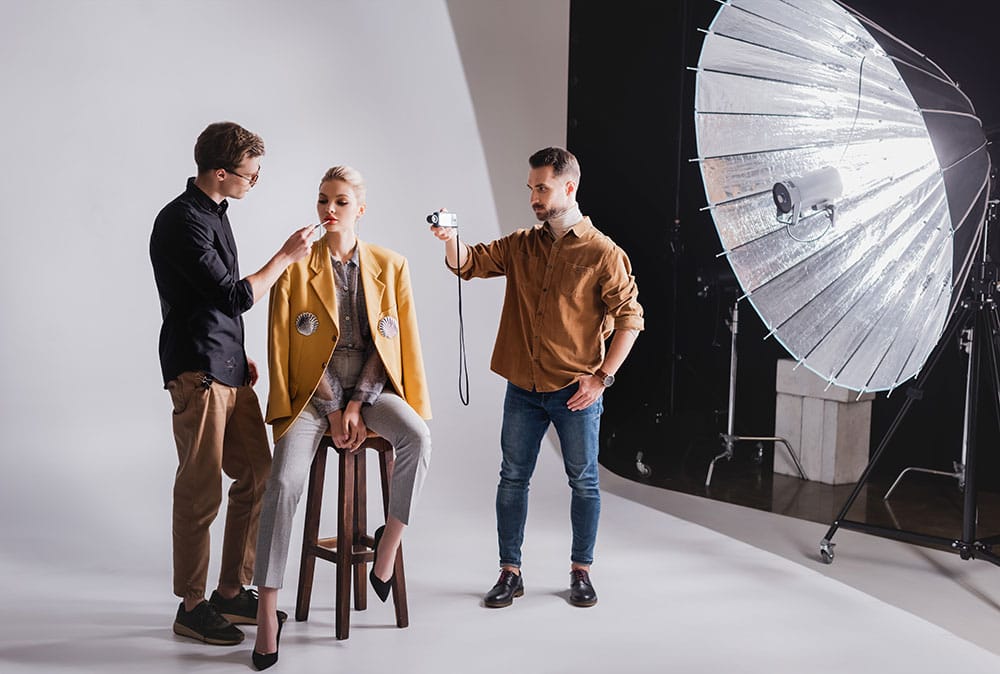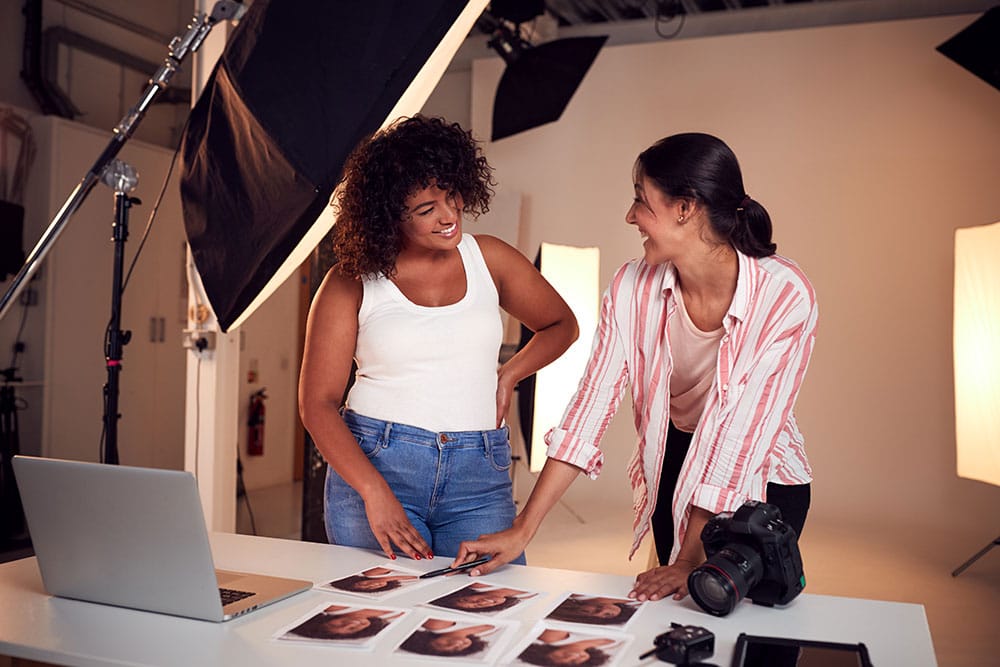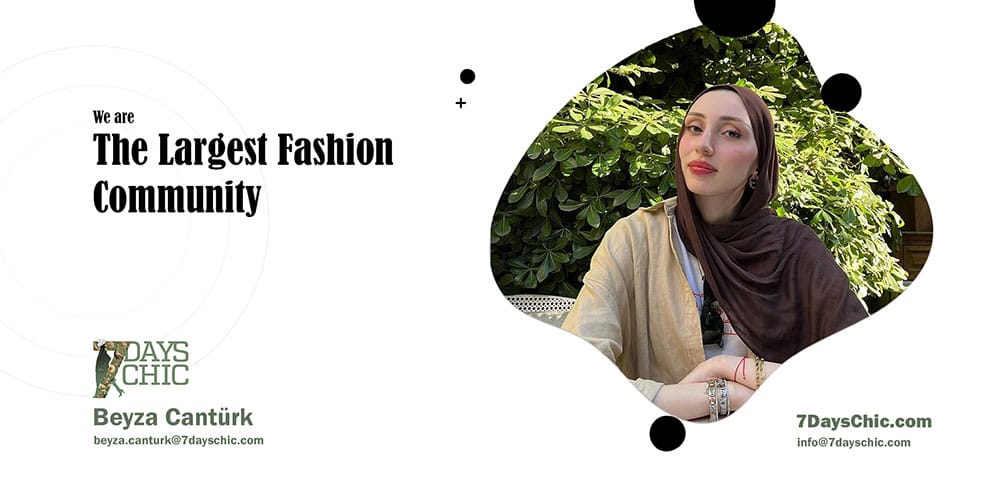4. Networking and Representation
Networking and representation are critical components of a successful modeling career. Building strong relationships within the industry can open doors to opportunities, help you gain valuable insights, and ensure you are represented by a reputable agency that aligns with your career goals. In this section, we will explore how to network effectively, the importance of finding the right modeling agency, and understanding the intricacies of agency contracts and agreements.
Building Relationships in the Industry:
1. Networking with Photographers, Agents, Stylists, and Designers
Networking is essential for models to establish themselves within the industry. Building relationships with key players such as photographers, agents, stylists, and designers can significantly impact your career trajectory. Here are several strategies for effective networking:
- Utilizing Social Media: Platforms like Instagram, Linkedln, and Facebook are invaluable tools for connecting with industry professionals. Follow and engage with photographers, agents, and brands that resonate with your personal style. Commenting on their work and sharing your thoughts can help you get noticed. Additionally, use these platforms to showcase your own modeling work, creating a visual portfolio accessible to potential collaborators.
- Collaborative Projects: Seek out opportunities for collaboration with photographers, stylists, and makeup artists who are also looking to build their portfolios. Test shoots (unpaid or low-paid work) can be an effective way to gain experience and create high-quality images for your portfolio. These collaborations can lead to lasting professional relationships and potential referrals down the line.
- Building a Professional Network: Attend industry-related events, such as fashion shows, photo exhibitions, and networking parties. Engaging in conversations with other professionals can help you learn more about their work and share your modeling aspirations. Always carry business cards or digital portfolios to distribute to potential contacts, ensuring you leave a lasting impression.
2. Attending Modeling Events, Fashion Weeks, and Castings
Participation in modeling events, fashion weeks, and casting calls is a vital way to gain exposure and build your network. Here’s how to make the most of these opportunities:
- Fashion Weeks and Trade Shows: Major fashion weeks, such as New York, Paris, Milan, and London, are prime opportunities for networking. Attend as a spectator if you’re not yet working in the shows. Observe how models interact with designers and agencies, and approach individuals during after-parties or informal gatherings to express your interest in their work. Fashion trade shows are also excellent venues for meeting designers and brands who may need models for upcoming campaigns.
- Casting Calls: Regularly attend casting calls for various modeling jobs. Even if you don’t land every job, being present at these events allows you to meet casting directors, clients, and other models. Treat every casting as a networking opportunity; often, simply showcasing professionalism and a positive attitude can leave a good impression on industry insiders.
- Modeling Workshops and Classes: Enroll in workshops that focus on modeling techniques, runway walks, or industry insights. These sessions often attract professionals who can provide valuable connections and advice. Additionally, they help you hone your skills, making you a more competitive candidate when pursuing modeling opportunities.
Finding a Modeling Agency

1. Researching Reputable Agencies
Finding the right modeling agency is crucial for your career. The agency you choose should align with your modeling goals, whether in fashion, commercial, or niche markets. Here are some steps to take when researching agencies:
- Identifying Potential Agencies: Start by compiling a list of reputable agencies that specialize in your area of interest. Look for agencies with a strong track record, positive client reviews, and successful models on their roster. Resources such as the Model Alliance or The Fashion Spot can provide information on established agencies and industry standards.
- Evaluating Agency Websites: Review agency websites to understand their client list, the types of models they represent, and their application process. Look for information about the models they work with, their recent campaigns, and any notable successes. This research can help you determine whether the agency is a good fit for you.
- Networking for Recommendations: Leverage your network to gather recommendations about agencies from other models or industry professionals. This firsthand insight can guide you to agencies that may be more accommodating and supportive of emerging talent.
2. Navigating the Agency Selection Process
Once you’ve narrowed down potential agencies, the next step is navigating the selection process. This involves applying, interviewing, and ensuring the agency aligns with your career goals:
- Preparing Your Application: Most agencies require an online application that includes your measurements, a cover letter, and portfolio images. Ensure that your application is polished and professional, as this will be your first impression. Tailor your cover letter to each agency, highlighting why you are interested in working with them and what you can bring to their roster.
- Attending Interviews and Meetings: If selected for an interview, come prepared to discuss your modeling aspirations and previous experience. Be confident and authentic, showcasing your personality. During the meeting, ask questions about their approach to model representation, how they support models in their careers, and what expectations they have of their talent.
- Evaluating Agency Fit: After meeting with an agency, assess whether it feels like a good fit. Consider factors such as their communication style, the level of support they offer, and how they prioritize your career goals. A supportive agency can significantly enhance your success in the industry.
Understanding Agency Contracts and Agreements
1. Key Components of Modeling Contracts
Once you secure representation, you will likely be presented with a contract outlining the terms of your agreement with the agency. Understanding this contract is crucial to protecting your interests:
- Duration of the Agreement: Most contracts will specify a set duration for your representation, typically ranging from one to three years. Be clear on how long you are committing to the agency and what the terms are for renewal or termination.
- Commission Structure: Contracts will outline the commission percentage that the agency will take from your earnings. Typical commission rates range from 10% to 20%, but this can vary. Ensure you understand how and when the agency will collect these fees and whether there are any additional costs you may incur.
- Exclusivity Clauses: Some contracts may include exclusivity clauses, preventing you from working with other agencies during the contract period. Ensure you understand the implications of exclusivity on your career and negotiate terms that allow for flexibility if necessary.
2. Negotiating Terms and Protecting Your Interests
While it’s important to be respectful of the agency’s terms, don’t hesitate to negotiate aspects of the contract that may not align with your goals. Here are some strategies for negotiating effectively:• Seek Legal Advice: If you’re uncertain about any part of the contract, consider consulting with a legal professional specializing in entertainment law. They can provide insights into the standard terms in modeling contracts and help protect your rights.
- Communicating Your Needs: Be open with the agency about your career aspirations and any specific needs you have. A reputable agency will appreciate your honesty and may be willing to accommodate your requests or clarify any concerns.
- Regular Contract Review: As your career evolves, periodically review your contract and the agency’s performance. If you feel that the agency is not meeting your expectations, discuss your concerns with them and consider your options moving forward.
In conclusion, networking and representation are foundational elements of a successful modeling career. By building strong relationships within the industry, finding the right agency, and understanding the contracts you enter, you can create a solid framework for your career growth. As you navigate the complexities of the modeling world, remember that proactive networking and careful representation will ultimately lead to greater opportunities and success.

5. Preparing for a Modeling Career
Preparing for a successful modeling career goes beyond just striking a pose; it requires a holistic approach that encompasses physical fitness, health, grooming, and personal branding. This section explores essential strategies for maintaining physical fitness and health, developing a skincare and grooming routine, and building a unique personal brand that resonates in the modeling industry.
Physical Fitness and Health:
1. Maintaining a Healthy Lifestyle with Exercise and Balanced Nutrition
Physical fitness is a fundamental aspect of a modeling career. Models are often expected to maintain a specific body shape and size, which necessitates a commitment to regular exercise and healthy eating habits. Here are key components of maintaining a healthy lifestyle:
- Regular Exercise Regimen: Establishing a consistent workout routine is crucial for staying in shape. Many models incorporate a mix of cardiovascular exercises, strength training, and flexibility workouts to achieve a balanced physique. Activities such as yoga, pilates, swimming, and dance can enhance flexibility and strength while also promoting mental wellness. Aim for at least 150 minutes of moderate aerobic activity or 75 minutes of vigorous activity each week, along with two or more days of strength training.
- Balanced Nutrition: A well-rounded diet is vital for maintaining energy levels and overall health. Models should focus on consuming a variety of nutrient-dense foods, including lean proteins, whole grains, fruits, and vegetables. Meal prepping can help ensure healthy eating choices are readily available. It’s essential to stay hydrated by drinking plenty of water throughout the day, as hydration significantly impacts skin health and energy levels.
- Diet and Wellness Tips for Models: Models often face pressure regarding their appearance, so adopting a healthy relationship with food is crucial. Instead of restrictive diets, consider focusing on balanced eating habits. Incorporate superfoods known for their health benefits, such as berries, nuts, and leafy greens.
Listening to your body’s hunger cues and prioritizing whole, unprocessed foods can also foster a sustainable approach to nutrition. If you have specific dietary restrictions or health concerns, consulting with a nutritionist can provide personalized guidance.
Skincare and Grooming:
1. Developing a Skincare Routine for Glowing Skin
Having clear, radiant skin is a key requirement for models, as it plays a significant role in their overall appearance. A dedicated skincare routine helps maintain skin health and enhance natural beauty. Here’s how to establish an effective skincare regimen:
- Daily Cleansing and Moisturizing: Begin with a gentle cleanser suitable for your skin type to remove makeup, dirt, and excess oils. Following cleansing, apply a moisturizer to hydrate the skin. Look for products containing hyaluronic acid or glycerin for optimal hydration. For those with specific skin concerns, consider incorporating serums with ingredients like vitamin C, retinol, or salicylic acid.
- Sunscreen Application: Protecting the skin from harmful UV rays is crucial. Apply a broad-spectrum sunscreen with at least SPF 30 daily, even on cloudy days or when indoors. This will help prevent premature aging, dark spots, and skin cancer. Reapply every two hours when outdoors, especially during prolonged sun exposure.
- Skincare Treatments: Regularly incorporate facials, exfoliation, and masks into your routine to promote skin health. Depending on your skin type, consider visiting a dermatologist for professional treatments like chemical peels or microdermabrasion.
2. Grooming Tips (Haircare, Makeup Basics, Nail Care)
Beyond skincare, grooming plays an essential role in a model’s overall presentation. Here are some grooming tips to maintain a polished look:
- Haircare: Healthy hair is essential for modeling. Develop a haircare routine that includes regular washing with sulfate-free shampoos and conditioners tailored to your hair type. Minimize heat styling and chemical treatments to reduce damage, and consider regular trims to maintain healthy ends. Using hair masks or oils can provide extra nourishment and shine.
- Makeup Basics: Understanding basic makeup application is crucial for models. While many shoots require minimal makeup, knowing how to enhance your features can be beneficial. Start with a flawless base using a primer, foundation, and concealer. Focus on accentuating your eyes and lips, as these features often stand out in photographs. Invest in quality makeup brushes and tools to achieve professional results.
- Nail Care: Well-groomed nails are a subtle yet important aspect of a model’s appearance. Regularly trim and shape your nails, and keep cuticles hydrated. While natural nails are often preferred, occasional manicures can enhance the overall look. Experiment with nail art or classic polish colors, depending on your style and the requirements of specific modeling jobs.

Developing Your Personal Brand
1. Building a Unique Brand Identity
In the competitive modeling industry, creating a strong personal brand is essential for standing out. Your brand identity encompasses how you present yourself and the values you convey through your work. Here are strategies to develop a unique brand identity:
- Defining Your Unique Selling Proposition (USP): Identify what sets you apart from other models. This could be your look, style, or the niche you wish to pursue (e.g., fitness, high fashion, commercial). Understanding your US will help you focus your efforts and attract the right opportunities.
- Crafting Your Visual Aesthetic: Develop a consistent visual aesthetic that reflects your personality and modeling style. This could involve specific colors, styles, and themes that resonate with your brand. Ensure that your portfolio, social media presence, and other promotional materials align with this aesthetic.
2. Creating and Managing Your Online Presence
In today’s digital age, having a strong online presence is crucial for models. Here’s how to effectively create and manage your online image:
- Social Media Strategy: Utilize platforms like Instagram, TikTok, and Facebook to showcase your work and connect with fans and industry professionals. Post regularly, share behind-the-scenes glimpses of your modeling journey, and engage with your audience. Use relevant hashtags to increase visibility and reach potential clients.
- Professional Website: Consider creating a professional website to serve as your online portfolio. Include high-quality images, a bio, contact information, and links to your social media accounts. A well-designed website can enhance your credibility and serve as a hub for potential clients and collaborators.
- Engaging with Your Audience: Respond to comments, messages, and interactions on your social media platforms. Building a relationship with your followers can foster a supportive community and increase your visibility within the industry.
In conclusion, preparing for a modeling career involves a multifaceted approach that prioritizes physical health, grooming, and personal branding. By maintaining a healthy lifestyle, developing effective skincare and grooming routines, and establishing a strong online presence, aspiring models can position themselves for success in a competitive industry. As you embark on your modeling journey, remember that consistency, authenticity, and dedication will be key to achieving your career goals.
6. Modeling Etiquette and Professionalism
In the modeling industry, etiquette and professionalism play crucial roles in building a successful career. As a model, how you conduct yourself on set, during events, and in your interactions with others can significantly impact your reputation and opportunities. This section explores essential aspects of modeling etiquette, including behavior on set and at events, as well as strategies for handling rejection and challenges.
Etiquette on Set and at Events:
1. Professional Behavior, Punctuality, and Positive Attitude
Professionalism begins with a strong work ethic and a commitment to being punctual. Arriving on time is not only courteous but also demonstrates your respect for the time and effort of others involved in the production. Here are some key elements of professional behavior:
- Punctuality: Being late can disrupt the schedule of the entire team, including photographers, stylists, and other models. Aim to arrive at least 15 minutes early to give yourself time to prepare and settle in. If you anticipate being late due to unforeseen circumstances, communicate promptly with the team to manage expectations.
- Positive Attitude: A positive demeanor can create a more enjoyable and productive working environment. Approaching each job with enthusiasm and a willingness to collaborate fosters good relationships with the crew. Even in challenging situations, maintaining a can-do attitude can set you apart and make you a preferred choice for future projects.

2. Following Directions and Collaborating with Teams
Models are often required to work with various professionals, including photographers, makeup artists, and stylists. Understanding how to effectively collaborate and follow directions is vital:
- Listening and Responding to Feedback: Being receptive to feedback and direction from the team is essential. Whether it’s adjusting your pose, expression, or wardrobe, demonstrating flexibility and a willingness to adapt can lead to better results. Models who actively engage with the creative process and provide constructive input can enhance the overall quality of the shoot.
- Collaboration: Modeling is a team effort. Building rapport with the crew can lead to a more comfortable and creative atmosphere. Make an effort to communicate openly with team members, whether it’s discussing ideas for poses, expressing concerns, or sharing your insights. Treating everyone with respect and kindness can foster a positive work environment, which ultimately benefits the final outcome.
Handling Rejection and Challenges: Developing Resilience and Mental Toughness
Rejection is an inevitable part of the modeling industry. Models often face numerous auditions and castings where they may not be selected. Developing resilience and mental toughness is essential for navigating these challenges:
- Embracing Rejection: It’s important to understand that rejection is not a reflection of your worth or talent as a model. Many factors influence the decision-making process, including the specific requirements of a project or the preferences of a client. Learning to separate your self-esteem from the outcomes of auditions can help you cope with disappointment more effectively.
- Finding Motivation in Setbacks: Use rejection as an opportunity for growth and self-improvement. After a casting where you were not selected, reflect on the experience and identify areas for development. This could involve seeking feedback from casting directors, taking classes to refine your skills, or gaining additional experience in a particular modeling niche.
Coping with Rejection, Criticism, and Setbacks
Models must also navigate criticism and setbacks that may arise during their careers. Here are strategies for coping with these challenges:
- Cultivating a Support System: Surrounding yourself with a supportive network can provide encouragement during difficult times. This support can come from friends, family, or fellow models who understand the unique pressures of the industry. Sharing experiences and discussing challenges can foster a sense of community and reduce feelings of isolation.
- Practicing Self-Care: Prioritize self-care to maintain your mental and emotional well-being. Engaging in activities that bring you joy and relaxation can help alleviate stress and improve your resilience. Whether it’s pursuing hobbies, spending time in nature, or practicing mindfulness techniques, self-care can reinforce your ability to handle challenges more effectively.
- Setting Realistic Goals: Establishing achievable goals can help you stay focused and motivated. Break down your aspirations into smaller, manageable steps, and celebrate your accomplishments along the way. This approach can provide a sense of direction and purpose, making it easier to cope with setbacks.
In conclusion, modeling etiquette and professionalism are foundational aspects of a successful career in the industry. By demonstrating professional behavior, collaborating effectively with teams, and developing resilience in the face of rejection and challenges, models can navigate the complexities of the industry more effectively. Ultimately, maintaining a commitment to professionalism and positive interactions can lead to long-lasting relationships and opportunities in the ever-evolving world of modeling.
Continue Reading:
How to Become a Model: A Step-by-Step Guide / Part 1
How to Become a Model: A Step-by-Step Guide / Part 2
How to Become a Model: A Step-by-Step Guide / Part 3
How to Become a Model: A Step-by-Step Guide / Part 4
How to Become a Model: A Step-by-Step Guide / Part 5
Written by: Beyza Cantürk




Add a Comment